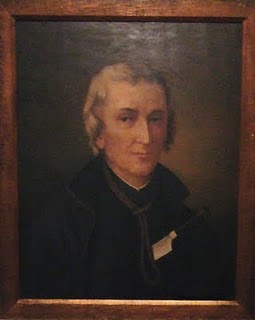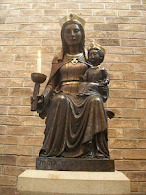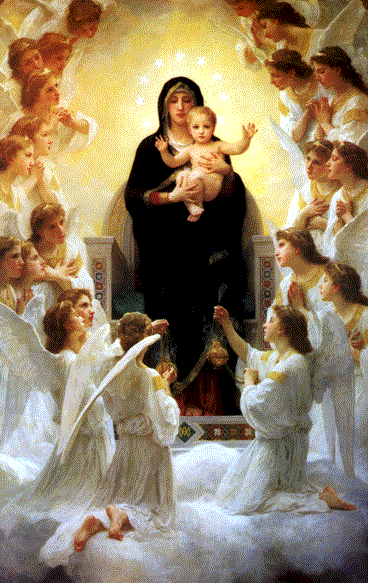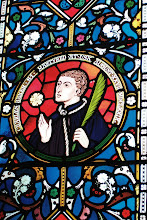come to do the Lord homage”

The Feast of the Epiphany commemorates the coming of the Wise Men to pay homage to the infant Jesus. These affluent, foreign visitors are also variously referred to as “Kings” or “Magi”.
The word “Epiphany” is derived from a Greek word meaning “manifestation”, “showing forth” or “revelation”. Epiphany celebrates the fact that Jesus Christ came for ALL PEOPLE, Jew or Gentile. The coming of the Wise Men, also known as “The Adoration of the Magi”, illustrates this because they were not Jewish and are often portrayed as being of African, European and Asian appearance. The Eastern (Orthodox) Church depicts the Wise Men or Magi, as twelve in number but in the Western Church they are portrayed as being three. The only Biblical mention of the Kings’ visit to the stable at Bethlehem is in Matthew 2:1-12 and he does not give a number. Three was probably arrived at because of the number of gifts Matthew mentions; “Then opening their treasures, they offered Him gifts of gold and frankincense and myrrh.”
The Feast of the Epiphany was traditionally celebrated on 6th January. It was know by various names, Twelfth Night, Old Christmas Day, Little Christmas Day, etc, and it marked the end of Christmas. All Christmas decorations came down and were put away for another year. Today, the Catholic Church in many countries, including Great Britain, celebrates the Feast of the Epiphany on the Sunday between 2nd and 8th January. Personally, I think that is a great pity, but I accept the Church’s decision on ALL things.
In 1907/08, during renovations to an old property in Cross Street, Abergavenny, a startling discovery was made. In the attic of a house that had once been part of Thomas Gunter’s mansion, workmen discovered a secret room. To everyone’s amazement, on the sloping ceiling of this room in the north end of the house, was a beautiful fresco. The subject of the painting was the “Adoration of the Magi”.
The owner of the property, Mrs Foster, had the good sense to realise that they had stumbled upon something of importance. After consultation with several prominent local historians, it was realized that they had found the secret chapel of Thomas Gunter. Here, in the 17th century, Abergavenny born Fr David Lewis and Monmouth born Fr Philip Evans had said Mass and ministered to the Catholics of the town. (Both priests were martyred for their faith in 1679.) Mrs Foster called in the Photographer, Mr Bailey of High Street, Abergavenny, who took photographs of the ceiling and other paintings and drawings which adorned the walls of the little room. Then, in an attempt to preserve the fresco, Mrs Foster had the painting carefully removed and placed under glass in an oak frame. For many years this treasure was in private hands but, fortunately, it is now on display in Abergavenny Museum where it can be viewed and appreciated by all.
In the fresco, believed to have been the altar piece under which the altar was positioned, Our Lady is wearing a blue dress and her head is encircled with a golden halo. The Child Jesus reposes on her lap and his head too is encircled with a golden halo but one of more elaborate design. The rays of the brightly shining star appear to shine directly towards the Infant. One of the Magi kneels in homage and offers his gift to the Babe. In Bailey’s photograph, which can be seen in the Haines Collection in Newport Library, three Magi are discernable. Unfortunately, only one remains today but, in the bottom right corner of the painting it is possible to see a hand of one of the vanished Magi. The gift the hand is bearing is also visible. On the opposite side of the painting an ox looks over his shoulder at the proceedings.
It is astonishing that this painting, hidden for over two centuries, has come to light and survived in such detail and beauty. The unknown artist has left us a wonderful reminder of the faith and courage of Thomas Gunter, St David Lewis, St Philip Evans, and the people who, in spite of grave danger, came to “do the Lord homage” in that little chapel in Thomas Gunter’s Mansion on Cross Street.








.JPG)

.JPG)



.JPG)

That is a beautiful video- I haven't given a lot of thought to the journey of the Kings, only the end of it, and this is a nice glimpse into how it might have been.
ReplyDeleteWhat a story on finding the hidden chapel and it's paintings. I pray that we never have to suffer the persecution of the faith like they did, but if we must I pray that we will be as strong as they were.
That's an amazing piece of history. Can visitors also see the hidden room? I liked the video. Is it a compilation of sections of the movie, The Nativity? It's cleverly done.
ReplyDeleteHappy and blessed new year to you!
Hi Shirley
ReplyDeleteThanks for looking in. I am pleased you enjoyed the video and yes, finding that hidden chapel was quite a find. They were brave people weren't they? Like you, I hope it never comes but if it does, I pray we will be as strong as they were.
Hello Sr Ann Marie
ReplyDeleteNice to hear from you. It is an amazing story of the chapel isn't it? It was known that Thomas Gunter had a chapel in his house but its exact location had been lost to memory. It must have caused quite a stir of excitement when it was discovered. The photo at the beginning of this post is of the mural discovered in the chapel and, as I said, it can be seen in Abergavenny Museum. Unfortunately, the Gunter Mansion is now divided into three or four shops and the hidden room is not open to the public. The video is nice, isn't it. Yes, it is from the movie, 'The Nativity'. God's blessings in 2010.
Thanks for the history.
ReplyDeleteWishing you a happy new year!
Good Morning Elizabeth
ReplyDeleteYou are welcome! I hope you enjoyed it. My main purpose is to promote devotion to St David Lewis and I hope to do that by posting as much information about him as I can. A very Happy 2010 to you and yours.
I just found two photographs of the beautiful ceilings that were decorating Gunter House, meanwhile i'm looking for photopraphs in the middle of the documentation of Alfonso XIII reigned, and this is because I work like photography curator at the Royal Palace in Madrid. Looking for the history about this photograhs I've found thi blog with the fantastic and heroic life of Saint David Lewis. I'm very gratefull to your blog, congratulations and forgive my faults,
ReplyDeleteR.U.G.
Hello Anonymous
ReplyDeleteI am so very pleased to hear from you. Thank you for taking the time to comment and thank you for your kind and encouraging words. I hope you will look in often. God bless you.